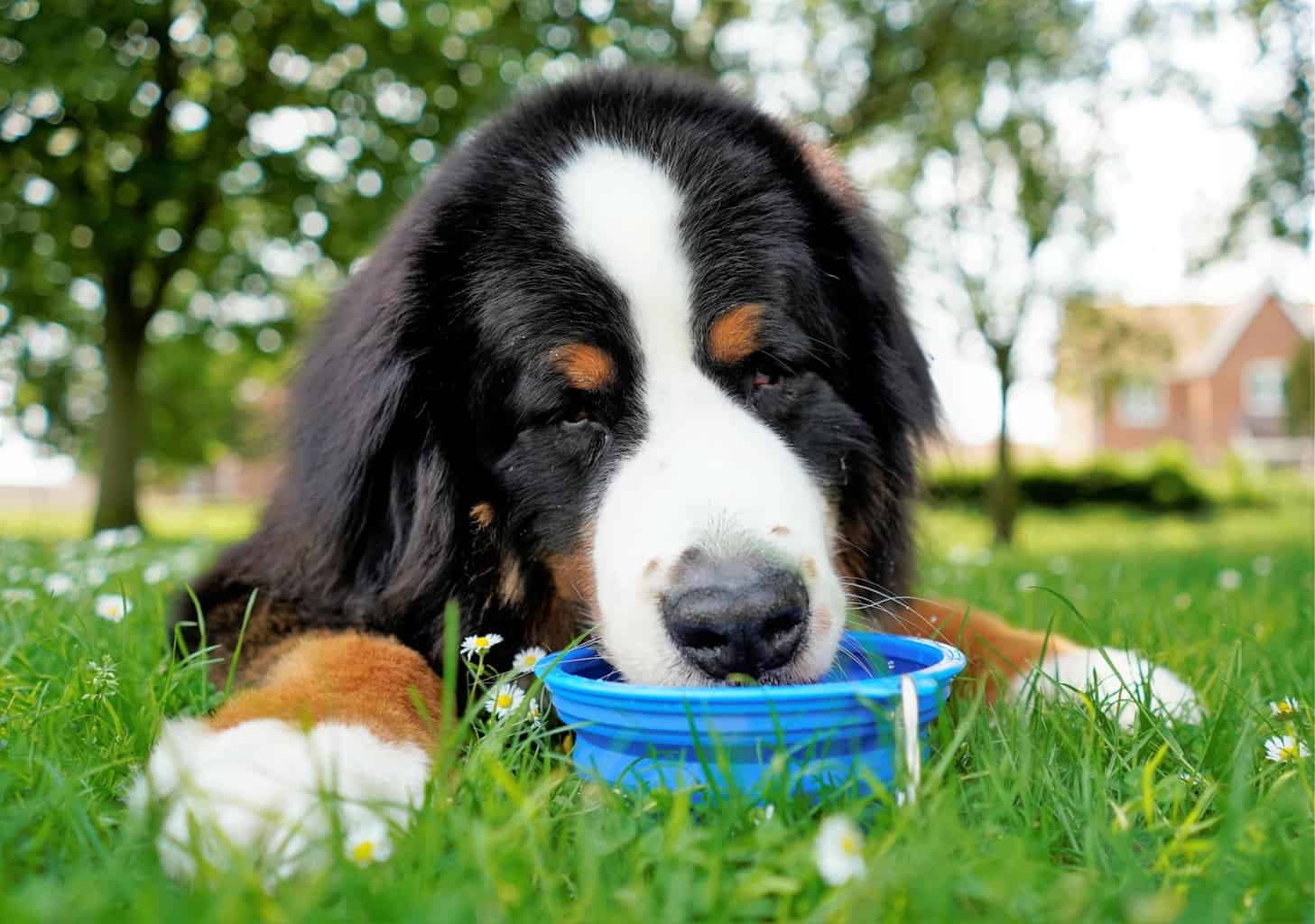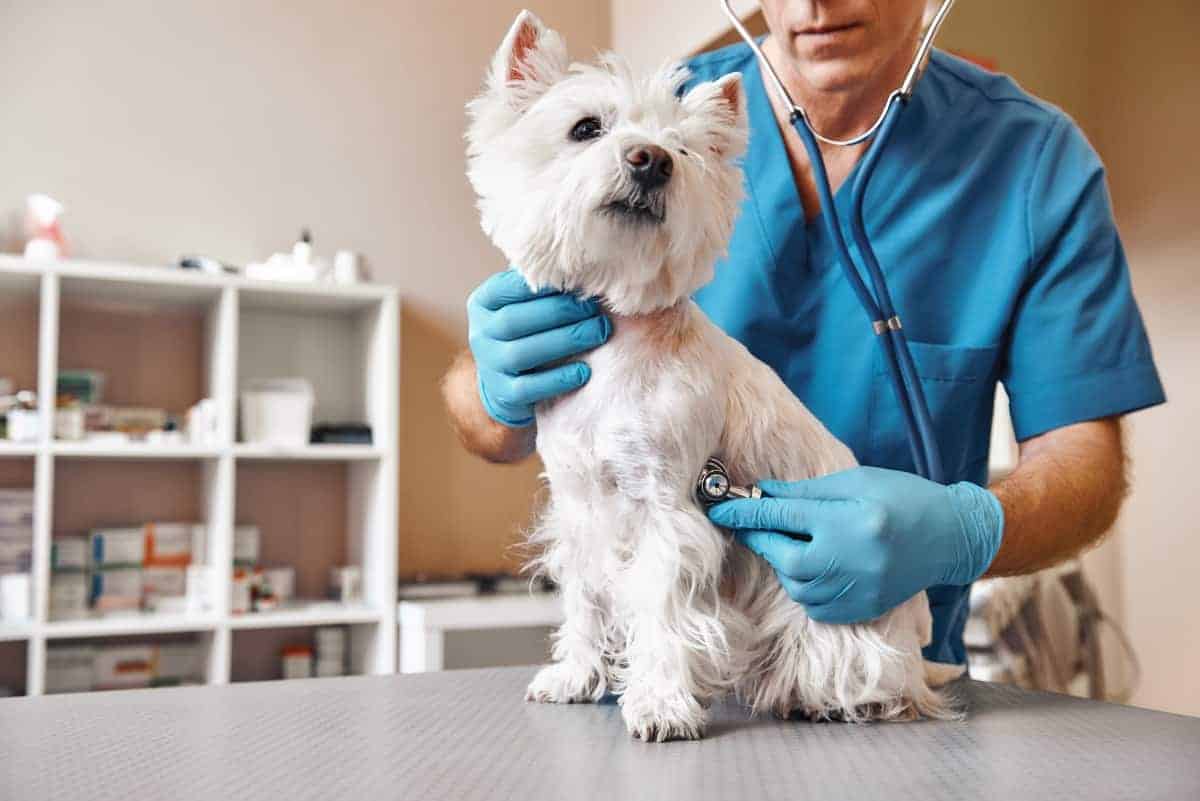
Excessive thirst and frequent urination are signs of five serious dog health problems: diabetes, kidney failure, liver disease, leptospirosis, and Cushing’s Disease.
Regrettably, not treating Cushing’s Disease could precipitate the others.
After running the necessary tests, your veterinarian can eliminate the others, leaving Cushing’s Disease as the diagnosis.
Understand Cushing’s Disease
Cushing’s Disease, or Cushing’s Syndrome, is also known as hyperadrenocorticism.
Because older dogs are more prone to tumors, vets often diagnose the disease in middle-aged and senior dogs. That does not mean younger dogs are immune.
Overproduction of cortisol, a natural steroid hormone, causes the disease.
The body releases cortisol in response to stress or low levels of blood glucocorticoids. Cortisol works to increase blood sugar, metabolize fat, proteins, and carbohydrates, and suppress your dog’s immune system.
This disease can be managed but not cured.
There are three known origins. They are tumors, lactogenic or “veterinary induced Cushings” from the overuse of glucocorticoid drugs (steroids, i.e., Prednisone, Prednisolone, Hydrocortisone, etc.) and Adrenocorticotrophic hormone (ACTH) also produced by the pituitary gland.
Most of the time, the source of the disease is a hyperactive pituitary gland found at the base of the brain. Approximately 85% of cases in dogs are from a minute benign tumor on the pituitary gland.
In the other 15%, a tumor on one or both adrenal glands in front of the kidneys causes the disease. Approximately 50% of these tumors are benign.
Recognize signs and symptoms
Signs and symptoms of Cushing’s Disease in dogs include:
- Extended belly
- Excessive thirst
- Increased thirst
- Frequent urination
- Accidental urination
- Increased appetite
- Weight gain
- Excessive shedding
- Baldness
- Shortness of breath
- Lethargy
- Seeking cooler places to sleep
- Loss of muscle mass
- Hypertension
- Excessive panting
- Appearing anxious or restless
- Delayed wound healing
- Thin skin
- Easy bruising
- Mood swings.
Some dogs become reluctant to jump on or off furniture. Others experience coat changes such as brittleness and dullness.
Dogs suffering from Cushing’s are prone to ear, skin, and urinary tract infections. The disease causes dogs to drink and urinate excessively.
How much water should your dog drink? Generally, dogs need an ounce of water per pound per day.
So, a 15-pound dog needs about two cups of water per day. Puppies, lactating dogs, and active dogs will need more. During excessive heat, dogs also will need more water.
If you notice your dog drinking excessive water, contact your veterinarian.
Who gets Cushing’s Syndrome?

Female dogs are slightly more prone to Cushing’s Disease, and so are dogs that have been spayed and neutered.
All breeds and ages are at risk. Middle-age and senior dogs face greater risk.
Breeds that appear most predisposed are Beagles, Boston Terriers, Boxers, Dachshunds, German Shepherds, Golden Retrievers, Jack Russells, Labrador Retrievers, Poodles, Scottish, and Yorkshire Terriers.
Female dogs are slightly more prone to the disease, and so are dogs that have been spayed and neutered.
Signs and symptoms like excessive thirst frequently appear when the animal ages 10 or older. The sooner the owner suspects and acts, the better it is for their pet.
How do you diagnose Cushing’s Disease?
Starting with the necessary blood tests for a baseline, your vet can do several tests to help diagnose the disease.
The ACTH Simulation Test uses the initial blood test as a baseline. Your dog is then injected with the adrenocorticotropic hormone ACTH, stimulating the glands to release their hormones. A dog will have a significantly elevated level of cortisol.
The cortisol level is then measured and compared to the baseline. This test cannot differentiate between pituitary and adrenal Cushing’s.
The Urine Cortisol/Creatinine Ratio Test also can rule out the disease.
The Low Dose Dexamethasone Suppression Test is the most recommended and shows the best results in diagnosing the condition.
The High Dose Dexamethasone Suppression Test differentiates pituitary or adrenal Cushings.
MRIs and CAT scans can detect and monitor the disease’s progress.
Can you treat Cushing’s?
While you can treat the disease, know that there is no cure. You can take steps to keep your pet more comfortable and improve its quality of life.
They include:
1. If your dog is a senior with arthritis or other serious health issues, it may be best to leave them alone. The treatments may be too stressful at their age and in their condition.
2. Chemotherapy can treat both pituitary and adrenal tumors.
3. Radiation can shrink pituitary tumors.
4. Surgery can remove adrenal tumors, as they are usually larger. Only experienced veterinary surgeons should do this surgery.
5. Medications can have serious side effects for the dog. Be cautious when handling Lysodren.
Lysodren is the most common medication prescribed for pituitary tumors but can cause serious side effects. Periodic ACTH Tests are needed when using this medication.
Pregnant women should not handle it. Use surgical gloves and wash your hands thoroughly.
Anipryl is a psychotropic drug that can help control Cushing’s.
Ketoconazole is an antifungal medication that can help.
Vetoryl is an adrenosuppressant. The British have encouraging reports on its safety and effectiveness.
6. Gradually reduce and eliminate the number of steroids your veterinarian prescribes to your dog. That will allow the gland to return to its normal function.
What happens if you don’t treat the disease?
Although Cushing’s has no cure, depending on your dog’s age and general health, you can manage the disease.
If left untreated, your dog may develop diabetes, hypertension, seizures, congestive heart failure, blood clots, pancreatitis, and liver and kidney failure.
Cushing’s Disease is severe. Considering the age and general health of your dog, as well as the progression of the disease, plus sufficient research and consultation with your vet, will help you make a responsible decision to find the best treatment for your pet.
Knowing there is no cure, you must focus on providing your dog with the best quality of life for whatever time you have left together.
Karen A. Soukiasian owns Good Dog! — Dog Training in St. Augustine, Florida. You can follow Karen on Facebook.
Does my dog have Addison’s Disease? Understand symptoms, treatment
